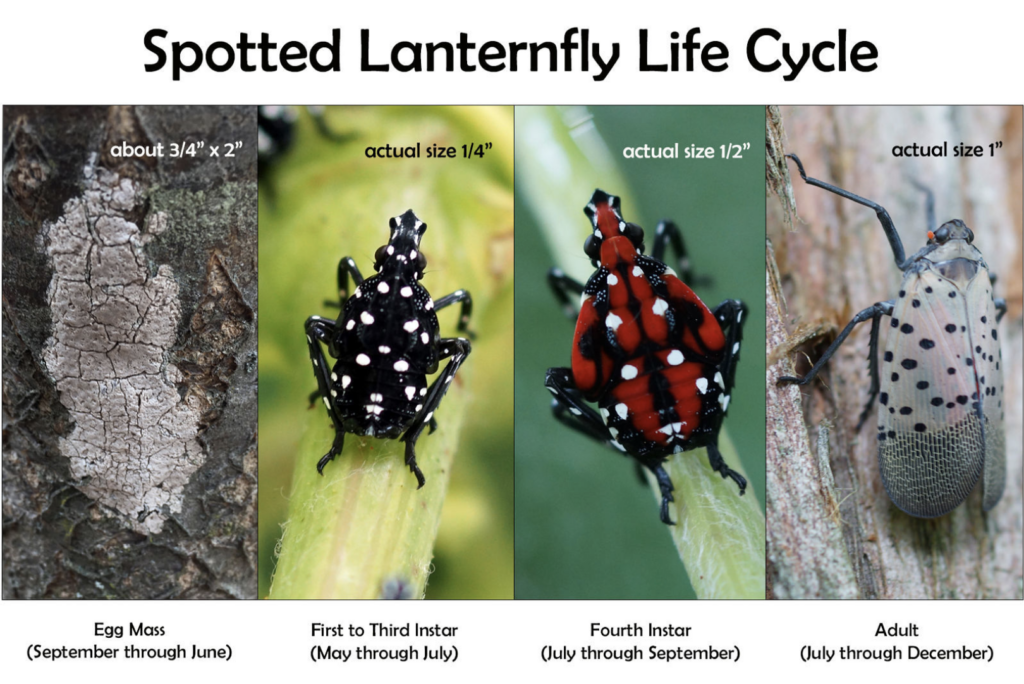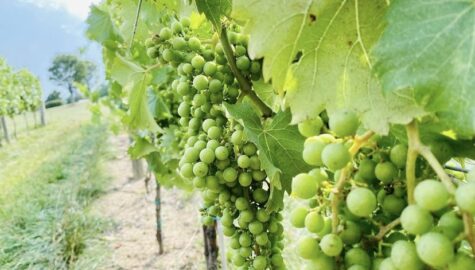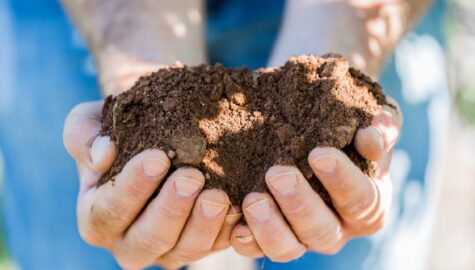
First detected in Pennsylvania in 2014, the Spotted Lanternfly is an invasive species that can be detrimental to the country’s grape and orchard industries. Spotted Lanternflies feed on a wide range of fruit and trees, with the tree-of-heaven being one of the preferred hosts.
If the spread continues, local wineries and vineyards are expected to be hit the hardest. Spotted Lanternflies can cause short- and long-term damage to the vines by feeding on them and leaving behind a residue or sap that encourages mold growth, plus could become a nuisance to visitors enjoying a glass of wine by the vineyards.
From learning how to detect the Spotted Lanternfly to how to deal with them in order to protect the vines (Stomp, Squash & Scrape), read more below.
The Spread
First spotted in the Commonwealth in 2018, the rapid spread is accelerated by reproduction and their tendency to travel. As of July, the Virginia Department of Agriculture has added 18 localities across the state to the original quarantine (4).

Watch the nationwide spread, here.
While the species pose a serious threat to vineyards across the state, they cause no harm to people— so you can take the matter into your own hands.
Look Before You Leave
A key method of managing the spread is minimizing their travel abilities. Attracted to shiny objects like trains and cars, Spotted Lanternflies are known for being hitchhikers.
Before and after any visit to a Virginia winery, please stop and take a look to make sure you aren’t bringing along any unwanted visitors. Spotted Lanternflies look different throughout their lifestyle, so here’s how to identify them:

- Egg Mass: SLF egg masses are 1-1.5″ long and ½-¾” wide, shiny and grayish-brown in color when fresh. They weather to a flat gray-brown color with age.
- First to Third Instar: Immature stages are black with white spots, and develop red patches as they grow.
- Fourth Instar: Red patches begin to cover the whole body with black and white spots.
- Adult: approximately 1″ long and 1/2″ wide at rest; gray forewing with black spots and the wing tips are reticulated black blocks outlined in gray; hind wings have contrasting patches of red and black with a white band; legs and head are black; abdomen is yellow with broad black bands.
If you spot one outside the heavily infested area of the City of Winchester and Clarke, Frederick and Warren Counties, please report sightings to your local Extension Office: https://ext.vt.edu/offices.html.
Stomp, Squash & Scrape
The second step to diminishing the spread is to kill any that you see.
May – November: Kill Nymphs and Adults – if numbers are low they can be stomped, squashed or scraped, or placed in a container of alcohol, diluted clorox (10%), or hand sanitizer. Larger populations can be treated with a contact or systemic insecticide.
Late September – May: Scrape egg masses into a plastic bag or container with alcohol, diluted clorox (10%), or hand sanitizer.
Other Ways to Help
- Buy firewood from a local source and try to burn it all before egg hatch in May.
- Do not park cars, trailers, boats, RVs, ATVs, or other means of conveyance under trees or near bushes.
- Do not store any items under trees or near bushes that you expect to be moved from the area.
- Inspect all outdoor furniture, play sets, garden equipment, outdoor machinery, or anything else stored outside for SLF life stages before leaving a site known to have SLF.
- Keep vehicle doors and windows closed to avoid hitchhikers.
- Manage Ailanthus altissima, Tree of Heaven, SLF’s favorite host. Remove 90% of all Tree of Heaven on your property and use the remaining 10% as trap trees. Treat the remaining 10% with a systemic insecticide from April thru September.
- Be sure to use a herbicide when removing Tree of Heaven. It is a very strong stump and root sprouter. Follow guidance for treating Tree of Heaven with a herbicide: http://www.dof.virginia.gov/infopubs/Control-andUtilization-of-Tree-of-Heaven-2019-03_pub.pdf.
- Spread the word! Everyone should stay vigilant to protect the vines.
More Resources
More Virginia Wine Stories

July 20, 2021
Summer 2021: Vineyard Update
Summer in Virginia’s vineyards marks a time of growth as vineyard crews begin to see the “fruits of their labor.” The vines go through the critical stages of fruit set—when […]
Read More
January 24, 2022
We Asked Virginia Wine Influencers: Why do you love #vawine?
The community of Virginia Wine lovers spans far and wide, with blogs and social media accounts sharing wine adventures across the Commonwealth. We asked nine local content creators to tell […]
Read More
October 22, 2019
The Dirt Speaks. We Listen.
A guest post by Matthew W. J. Brown, DipWSET While it is true that every corner of the wine-growing world experiences variation from vintage to vintage, there are few places […]
Read More